In the gardening world, companion planting has long been recognized as a valuable strategy for maximizing yields, enhancing plant health, and promoting biodiversity. When cultivating cucumbers, selecting the right cucumber companion plants is crucial for creating a thriving garden ecosystem. These companion plants play a vital role in providing various benefits, such as pest control, nutrient enhancement, and pollination support, ultimately contributing to the overall success of the cucumber crop. In this guide, we will explore the importance of cucumber companion plants and discover which plants thrive best alongside cucumbers to create a harmonious and productive garden environment.
Best Companion Plants for Cucumbers
Oregano
Oregano (Origanum vulgare) is a fragrant herb known for its culinary uses and aromatic properties. As a companion plant for cucumbers, oregano provides several benefits, including pest-repellent effects, weed suppression, and potential flavor enhancement.
Benefits of Oregano for Cucumbers
- Pest Repellent: Oregano’s strong aroma deters common pests such as aphids, cucumber beetles, and spider mites, protecting cucumber plants from damage.
- Weed Suppression: The dense growth habit of oregano helps cover the ground, reducing the space for weeds to grow and compete with cucumbers for nutrients.
- Enhanced Flavor: Some gardeners believe that oregano can improve the flavor of cucumbers grown nearby due to the beneficial interactions between the plants.
Planting Oregano with Cucumbers
Planting Instructions:
- Start by sowing oregano seeds indoors 6-8 weeks before the last frost or directly in the garden once the soil has warmed.
- Transplant seedlings to the garden once they are about 4-6 inches tall.
- Choose a sunny location with well-drained soil for both oregano and cucumbers.
Spacing Requirements:
- Plant oregano about 12-18 inches apart from cucumber plants to allow adequate air circulation and prevent overcrowding.
Common Mistakes to Avoid
- Overwatering Oregano: Oregano does not thrive in waterlogged soil. Ensure the soil has good drainage to prevent root rot.
- Planting Too Close: Avoid planting oregano too close to cucumbers, as it can compete for nutrients and water. Maintain proper spacing.
- Neglecting Pruning: Regularly trim oregano to maintain its shape and prevent it from overtaking the cucumber plants.
Related Oregano Companion Plants
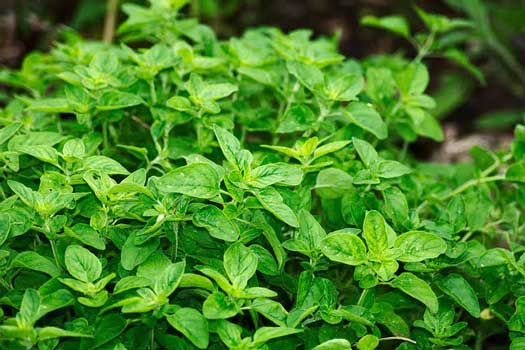
Marigolds
Marigolds (Tagetes spp.) are popular flowering plants for their bright blooms and pest-repellent properties. As a companion plant for cucumbers, marigolds offer several benefits that contribute to the overall health and productivity of the cucumber plants.
Benefits of Marigolds for Cucumbers
- Nematode Control: Marigolds release natural compounds that suppress root-knot nematodes, which can harm cucumber roots.
- Pest Deterrent: Their strong scent repels many common pests, including aphids, whiteflies, and beetles.
- Attract Beneficial Insects: Marigolds attract pollinators and beneficial insects, such as ladybugs, which help control pest populations.
Planting Marigolds with Cucumbers
Planting Instructions:
- Sow marigold seeds directly in the garden after the last frost or start them indoors 4-6 weeks earlier.
- Transplant seedlings to the garden when they are sturdy enough to handle.
Spacing Requirements:
- Plant marigolds 12-18 inches apart from cucumber plants to ensure both have enough space to grow without competing for resources.
Common Mistakes to Avoid
- Overwatering: Marigolds do not thrive in overly wet soil. Ensure the soil is well-draining to prevent root rot.
- Planting Too Close: Give marigolds and cucumbers adequate space to avoid competition for nutrients and water.
- Ignoring Deadheading: Remove spent blooms to promote new flower growth and maintain plant health.

Chrysanthemum
Chrysanthemums (Chrysanthemum spp.) are valued for their vibrant flowers and ability to repel pests. As companion plants for cucumbers, chrysanthemums can contribute to the health and productivity of cucumber plants by providing several ecological benefits.
Benefits of Chrysanthemums for Cucumbers
- Pest Repellent: Chrysanthemums produce a natural insecticide called pyrethrin, which repels many pests, including aphids, spider mites, and Japanese beetles.
- Pollinator Attraction: The bright flowers of chrysanthemums attract pollinators, enhancing the pollination of cucumber plants.
- Disease Prevention: Chrysanthemums can help reduce the incidence of certain fungal diseases by improving air circulation when adequately spaced.
Planting Chrysanthemums with Cucumbers
Planting Instructions:
- Start chrysanthemums from seeds indoors 6-8 weeks before the last frost, or purchase young plants from a nursery.
- Transplant them to the garden once the danger of frost has passed and the soil has warmed.
Spacing Requirements:
- Plant chrysanthemums about 18-24 inches apart from cucumber plants to allow for good air circulation and to minimize competition for nutrients.
Common Mistakes to Avoid
- Overwatering: Ensure chrysanthemums are not planted in waterlogged soil to prevent root rot.
- Crowded Planting: Avoid planting chrysanthemums too close to cucumbers to reduce competition for resources and improve air circulation.
- Neglecting Pruning: Regularly pinch back chrysanthemums to maintain their shape and encourage robust growth.

Calendula
Calendula (Calendula officinalis), or pot marigold, is a versatile flowering plant known for its bright blooms and beneficial properties. As a companion plant for cucumbers, calendula offers pest-repellent benefits. It attracts beneficial insects, enhancing the overall health of cucumber plants.
Benefits of Calendula for Cucumbers
- Pest Repellent: Calendula secretes sticky substances that trap pests like aphids and whiteflies, reducing their impact on cucumber plants.
- Attract Beneficial Insects: The bright flowers of calendula attract pollinators and beneficial insects such as hoverflies and ladybugs, which help control pest populations.
- Soil Improvement: Calendula’s deep roots help aerate the soil, improving soil structure and nutrient availability for cucumbers.
Planting Calendula with Cucumbers
Planting Instructions:
- Sow calendula seeds directly in the garden after the last frost or start them indoors 4-6 weeks earlier.
- Transplant seedlings to the garden when they are sturdy enough to handle.
Spacing Requirements:
- Plant calendula 12-18 inches apart from cucumber plants to ensure both have enough space to grow without competing for resources.
Common Mistakes to Avoid
- Overwatering: Calendula does not thrive in overly wet soil. Ensure the soil is well-draining to prevent root rot.
- Planting Too Close: Give calendula and cucumbers adequate space to avoid competition for nutrients and water.
- Ignoring Deadheading: Remove spent blooms to promote new flower growth and maintain plant health.

Dill
Dill (Anethum graveolens) is a fragrant herb known for its culinary uses and beneficial properties in the garden. As a companion plant for cucumbers, dill can enhance growth, attract beneficial insects, and repel pests.
Benefits of Dill for Cucumbers
- Pest Repellent: Dill’s strong aroma helps deter pests such as aphids, spider mites, and squash bugs, protecting cucumber plants.
- Attract Beneficial Insects: Dill flowers attract pollinators and beneficial insects, such as ladybugs and parasitic wasps, which help control pest populations.
- Improved Growth and Health: Dill can improve the growth and health of cucumber plants through its allelopathic effects, enhancing overall plant vigor.
Planting Dill with Cucumbers
Planting Instructions:
- Sow dill seeds directly in the garden after the last frost or start them indoors 2-4 weeks earlier.
- Transplant seedlings to the garden when they are sturdy enough to handle.
Spacing Requirements:
- Plant dill about 12-18 inches apart from cucumber plants to allow for good air circulation and prevent overcrowding.
Common Mistakes to Avoid
- Overwatering: Ensure dill is not planted in waterlogged soil to prevent root rot.
- Planting Too Close: Avoid planting dill too close to cucumbers to reduce competition for nutrients and water.
- Neglecting Thinning: Regularly thin dill plants to maintain proper spacing and avoid overcrowding.

Sunflowers
Sunflowers (Helianthus annuus) are tall, vibrant plants known for their striking appearance and ability to attract beneficial insects. As a companion plant for cucumbers, sunflowers provide several benefits, including attracting pollinators, providing shade, and improving soil health.
Benefits of Sunflowers for Cucumbers
- Attract Pollinators: Sunflowers attract bees and other pollinators, enhancing cucumber plants’ pollination and fruit set.
- Provide Shade: Tall sunflowers can provide partial shade for cucumber plants, protecting them from excessive heat and sun.
- Improve Soil Health: Sunflowers have deep roots that help aerate the soil, improving its structure and nutrient availability.
Planting Sunflowers with Cucumbers
Planting Instructions:
- Sow sunflower seeds directly in the garden after the last frost.
- Space seeds evenly and thin seedlings to the desired spacing once they are a few inches tall.
Spacing Requirements:
- Plant sunflowers about 24-36 inches apart from cucumber plants to ensure adequate space and light for both plants.
Common Mistakes to Avoid
- Overwatering: Ensure sunflowers are not planted in waterlogged soil to prevent root rot.
- Planting Too Close: Avoid planting sunflowers too close to cucumbers to ensure both plants receive adequate light and nutrients.
- Ignoring Staking: Tall sunflowers may require staking to prevent them from falling over in strong winds.
Related Sunflowers Companion Plants
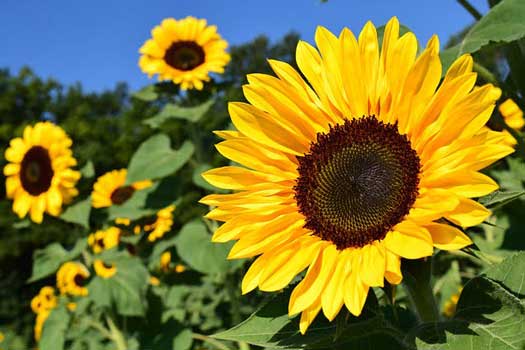
Radishes
Radishes (Raphanus sativus) are fast-growing root vegetables known for their peppery flavor. Radishes offer several benefits as a cucumber companion plant, including pest-repellent effects and soil aeration.
Benefits of Radishes for Cucumbers
- Pest Repellent: Radishes can deter pests such as cucumber beetles and aphids, protecting cucumber plants from damage.
- Soil Aeration: Radishes have deep roots that help break up compacted soil, improving soil structure and nutrient availability for cucumbers.
- Trap Crops: Radishes can act as trap crops, luring pests away from cucumber plants and reducing pest pressure.
Planting Radishes with Cucumbers
Planting Instructions:
- Sow radish seeds directly in the garden as soon as the soil can be worked in the spring.
- Plant seeds 1/2 inch deep and 1 inch apart in rows.
Spacing Requirements:
- Plant radishes about 4-6 inches apart from cucumber plants to allow for good air circulation and prevent overcrowding.
Common Mistakes to Avoid
- Overwatering: Ensure radishes are not planted in waterlogged soil to prevent root rot.
- Planting Too Close: Avoid planting radishes too close to cucumbers to reduce competition for nutrients and water.
- Ignoring Thinning: Regularly thin radish seedlings to maintain proper spacing and avoid overcrowding.
Related Radishes Companion Plants
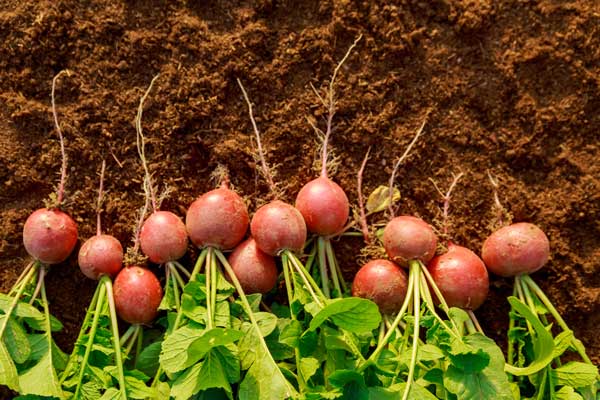
Onions
Onions (Allium cepa) are versatile vegetables known for their intense flavor and pest-repellent properties. As a companion plant for cucumbers, onions provide several benefits, including deterring pests and improving soil health.
Benefits of Onions for Cucumbers
- Pest Repellent: Onions emit a strong odor that deters pests such as aphids, carrot flies, and cucumber beetles, protecting cucumber plants.
- Soil Health: Onions have shallow roots that help improve soil structure and prevent erosion.
- Disease Prevention: Onions can help reduce the incidence of certain fungal diseases by improving air circulation when adequately spaced.
Planting Onions with Cucumbers
Planting Instructions:
- Plant onion sets or seeds directly in the garden as soon as the soil can be worked in the spring.
- Space sets or seeds evenly and thin seedlings to the desired spacing once they are a few inches tall.
Spacing Requirements:
- Plant onions about 6-8 inches apart from cucumber plants to allow for good air circulation and prevent overcrowding.
Common Mistakes to Avoid
- Overwatering: Ensure onions are not planted in waterlogged soil to prevent root rot.
- Planting Too Close: Avoid planting onions too close to cucumbers to ensure both plants receive adequate light and nutrients.
- Ignoring Weeding: Regularly weed around onion plants to prevent competition and maintain healthy growth.

Lettuce
Lettuce (Lactuca sativa) is a leafy green vegetable known for its mild flavor and fast growth. As a companion plant for cucumbers, lettuce provides several benefits, including acting as a living mulch and attracting beneficial insects.
Benefits of Lettuce for Cucumbers
- Living Mulch: Lettuce grows quickly and covers the soil, acting as a living mulch that helps retain moisture and suppress weeds around cucumber plants.
- Attract Beneficial Insects: Lettuce can attract beneficial insects, such as ladybugs and predatory beetles, which help control pest populations.
- Soil Cooling: The leafy canopy of lettuce can help keep the soil cooler, reducing heat stress on cucumber plants.
Planting Lettuce with Cucumbers
Planting Instructions:
- Sow lettuce seeds directly in the garden as soon as the soil can be worked in the spring.
- Plant seeds 1/4 inch deep and 1 inch apart in rows.
Spacing Requirements:
- Plant lettuce about 6-12 inches apart from cucumber plants to allow for good air circulation and prevent overcrowding.
Common Mistakes to Avoid
- Overwatering: Ensure lettuce is not planted in waterlogged soil to prevent root rot.
- Planting Too Close: Avoid planting lettuce too close to cucumbers to reduce competition for nutrients and water.
- Ignoring Thinning: Regularly thin lettuce seedlings to maintain proper spacing and avoid overcrowding.
Related Lettuce Companion Plants

Beets
Beets (Beta vulgaris) are root vegetables known for their sweet flavor and nutrient-rich greens. As a companion plant for cucumbers, beets provide several benefits, including soil improvement and pest-repellent effects.
Benefits of Beets for Cucumbers
- Soil Improvement: Beets have deep roots that help break up compacted soil, improving soil structure and nutrient availability for cucumbers.
- Pest Repellent: Beets can help repel pests such as aphids and leaf miners, protecting cucumber plants from damage.
- Companion Plant Benefits: Beets and cucumbers can grow well together without competing for resources, as beets occupy different root zones.
Planting Beets with Cucumbers
Planting Instructions:
- Sow beet seeds directly in the garden as soon as the soil can be worked in the spring.
- Plant seeds 1/2 inch deep and 1 inch apart in rows.
Spacing Requirements:
- Plant beets about 6-8 inches apart from cucumber plants to allow for good air circulation and prevent overcrowding.
Common Mistakes to Avoid
- Overwatering: Ensure beets are not planted in waterlogged soil to prevent root rot.
- Planting Too Close: Avoid planting beets too close to cucumbers to reduce competition for nutrients and water.
- Ignoring Thinning: Regularly thin beet seedlings to maintain proper spacing and avoid overcrowding.

Carrots
Carrots (Daucus carota) are root vegetables known for their sweet flavor and crunchy texture. Carrots provide several benefits as a companion plant for cucumbers, including soil aeration and mutual growth enhancement.
Benefits of Carrots for Cucumbers
- Soil Aeration: Carrots’ deep roots help break up compacted soil, improving soil structure and nutrient availability for cucumbers.
- Space Efficiency: Carrots and cucumbers can grow well together without competing for resources, as carrots occupy a different root zone.
- Pest Deterrent: Carrots can help repel pests such as aphids and root maggots, protecting cucumber plants from damage.
Planting Carrots with Cucumbers
Planting Instructions:
- Sow carrot seeds directly in the garden as soon as the soil can be worked in the spring.
- Plant seeds 1/4 inch deep and 1 inch apart in rows.
Spacing Requirements:
- Plant carrots about 12 inches apart from cucumber plants to allow for good air circulation and prevent overcrowding.
Common Mistakes to Avoid
- Overwatering: Ensure carrots are not planted in waterlogged soil to prevent root rot.
- Planting Too Close: Avoid planting carrots too close to cucumbers to reduce competition for nutrients and water.
- Ignoring Thinning: Regularly thin carrot seedlings to maintain proper spacing and avoid overcrowding.
Related Carrots Companion Plants

Sweet Alyssum
Sweet Alyssum (Lobularia maritima) is a low-growing annual known for its small, fragrant flowers. As a companion plant for cucumbers, sweet alyssum provides several benefits, including attracting beneficial insects and acting as a living mulch.
Benefits of Sweet Alyssum for Cucumbers
- Attract Beneficial Insects: Sweet alyssum attracts pollinators and beneficial insects, such as hoverflies and predatory wasps, which help control pest populations.
- Living Mulch: Its low-growing habit helps cover the soil, reducing weed growth and retaining soil moisture around cucumber plants.
- Aesthetic Appeal: Sweet alyssum adds beauty to the garden’s delicate, fragrant flowers.
Planting Sweet Alyssum with Cucumbers
Planting Instructions:
- Sow sweet alyssum seeds directly in the garden after the last frost or start them indoors 4-6 weeks earlier.
- Transplant seedlings to the garden when they are sturdy enough to handle.
Spacing Requirements:
- Plant sweet alyssum about 6-12 inches apart from cucumber plants to allow for good air circulation and prevent overcrowding.
Common Mistakes to Avoid
- Overwatering: Ensure sweet alyssum is not planted in waterlogged soil to prevent root rot.
- Planting Too Close: Avoid planting sweet alyssum too close to cucumbers to reduce competition for nutrients and water.
- Ignoring Deadheading: Remove spent blooms to promote new flower growth and maintain plant health.
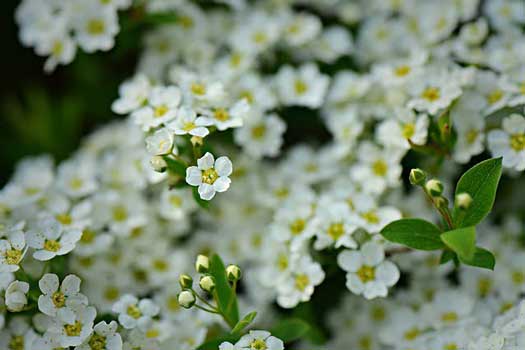
Shallots
Shallots (Allium cepa var. aggregatum) are a type of onion known for their mild flavor and versatility in cooking. As a cucumber companion plant, shallots provide several benefits, including pest deterrence and soil health improvement.
Benefits of Shallots for Cucumbers
- Pest Deterrent: Shallots emit a strong odor that deters pests such as aphids, carrot flies, and cucumber beetles, protecting cucumber plants.
- Soil Health: Shallots have shallow roots that help improve soil structure and prevent erosion.
- Disease Prevention: Shallots can help reduce the incidence of certain fungal diseases by improving air circulation when adequately spaced.
Planting Shallots with Cucumbers
Planting Instructions:
- Plant shallot sets or seeds directly in the garden when the soil can be worked in the spring.
- Space sets or seeds evenly and thin seedlings to the desired spacing once they are a few inches tall.
Spacing Requirements:
- Plant shallots about 6-8 inches apart from cucumber plants to allow for good air circulation and prevent overcrowding.
Common Mistakes to Avoid
- Overwatering: Ensure shallots are not planted in waterlogged soil to prevent root rot.
- Planting Too Close: Avoid planting shallots too close to cucumbers to ensure both plants receive adequate light and nutrients.
- Ignoring Weeding: Regularly weed around shallot plants to prevent competition and maintain healthy growth.
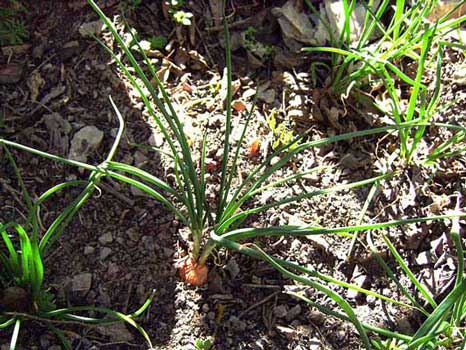
Arugula
Arugula (Eruca vesicaria) is a leafy green vegetable known for its peppery flavor and fast growth. As a companion plant for cucumbers, arugula provides several benefits, including pest-repellent effects and acting as a living mulch.
Benefits of Arugula for Cucumbers
- Pest Repellent: Arugula can deter pests such as aphids and flea beetles, protecting cucumber plants from damage.
- Living Mulch: Arugula grows quickly and covers the soil, acting as a living mulch that helps retain moisture and suppress weeds around cucumber plants.
- Soil Cooling: The leafy canopy of arugula can help keep the soil cooler, reducing heat stress on cucumber plants.
Planting Arugula with Cucumbers
Planting Instructions:
- Sow arugula seeds directly in the garden as soon as the soil can be worked in the spring.
- Plant seeds 1/4 inch deep and 1 inch apart in rows.
Spacing Requirements:
- Plant arugula about 6-12 inches apart from cucumber plants to allow for good air circulation and prevent overcrowding.
Common Mistakes to Avoid
- Overwatering: Ensure arugula is not planted in waterlogged soil to prevent root rot.
- Planting Too Close: Avoid planting arugula too close to cucumbers to reduce competition for nutrients and water.
- Ignoring Thinning: Regularly thin arugula seedlings to maintain proper spacing and avoid overcrowding.
Related Arugula Companion Plants

Nasturtiums
Nasturtiums (Tropaeolum majus) are vibrant, flowering plants known for their edible flowers and pest-repellent properties. As a companion plant for cucumbers, nasturtiums provide several benefits, including attracting beneficial insects and acting as a trap crop.
Key Benefits of Nasturtiums as a Companion Plant for Cucumbers
- Pest Repellent: Nasturtiums can deter pests such as aphids, whiteflies, and cucumber beetles, protecting cucumber plants from damage.
- Attract Beneficial Insects: The bright flowers of nasturtiums attract pollinators and beneficial insects such as hoverflies and predatory beetles, which help control pest populations.
- Trap Crop: Nasturtiums can act as trap crops, luring pests away from cucumber plants and reducing pest pressure.
How to Plant Nasturtiums with Cucumbers
Planting Instructions:
- Sow nasturtium seeds directly in the garden after the last frost or start them indoors 4-6 weeks earlier.
- Transplant seedlings to the garden when they are sturdy enough to handle.
Spacing Requirements:
- Plant nasturtiums about 12-18 inches apart from cucumber plants to allow for good air circulation and prevent overcrowding.
Common Mistakes to Avoid
- Overwatering: Ensure nasturtiums are not planted in waterlogged soil to prevent root rot.
- Planting Too Close: Avoid planting nasturtiums too close to cucumbers to reduce competition for nutrients and water.
- Ignoring Deadheading: Remove spent blooms to promote new flower growth and maintain plant health.
Related Nasturtiums Companion Plants
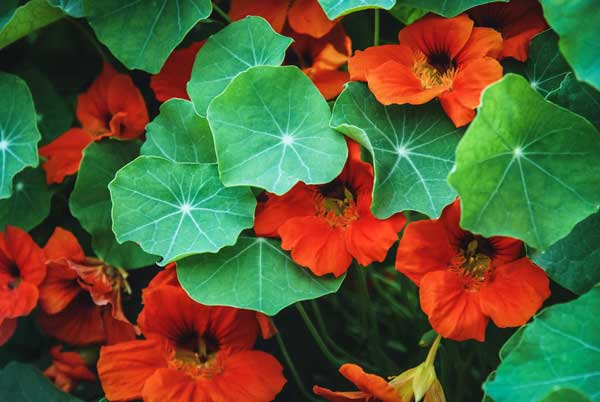
Beans
Beans (Phaseolus spp.) are legumes known for fixing nitrogen in the soil. As a companion plant for cucumbers, beans provide several benefits, including soil enrichment and mutual growth enhancement.
Benefits of Beans for Cucumbers
- Nitrogen Fixation: Beans can fix nitrogen in the soil, enriching it and providing essential nutrients for cucumber plants.
- Mutual Support: Beans can provide structural support for cucumber vines, especially using pole beans.
- Pest Deterrent: Beans can help repel pests such as cucumber beetles, protecting cucumber plants from damage.
Planting Beans with Cucumbers
Planting Instructions:
- Sow bean seeds directly in the garden after the last frost.
- Plant seeds 1 inch deep and 2-4 inches apart in rows.
Spacing Requirements:
- Plant beans about 12 inches apart from cucumber plants to allow for good air circulation and prevent overcrowding.
Common Mistakes to Avoid
- Overwatering: Ensure beans are not planted in waterlogged soil to prevent root rot.
- Planting Too Close: Avoid planting beans too close to cucumbers to reduce competition for nutrients and water.
- Ignoring Support: Support pole beans to ensure proper growth and prevent plants from toppling over.

Zinnias
Zinnias (Zinnia elegans) are colorful, flowering plants known for their vibrant blooms and ability to attract beneficial insects. As a companion plant for cucumbers, zinnias provide several benefits, including attracting pollinators and enhancing garden aesthetics.
Benefits of Zinnias for Cucumbers
- Attract Pollinators: Zinnias attract bees, butterflies, and other pollinators, enhancing the pollination and fruit set of cucumber plants.
- Pest Deterrent: Zinnias can help deter pests such as aphids and cucumber beetles, protecting cucumber plants from damage.
- Aesthetic Appeal: Zinnias add beauty to the garden with their colorful and long-lasting blooms.
Planting Zinnias with Cucumbers
Planting Instructions:
- Sow zinnia seeds directly in the garden after the last frost or start them indoors 4-6 weeks earlier.
- Transplant seedlings to the garden when they are sturdy enough to handle.
Spacing Requirements:
- Plant zinnias about 12-18 inches apart from cucumber plants to allow for good air circulation and prevent overcrowding.
Common Mistakes to Avoid
- Overwatering: Ensure zinnias are not planted in waterlogged soil to prevent root rot.
- Planting Too Close: Avoid planting zinnias too close to cucumbers to reduce competition for nutrients and water.
- Ignoring Deadheading: Remove spent blooms to promote new flower growth and maintain plant health.
Related Zinnias Companion Plants
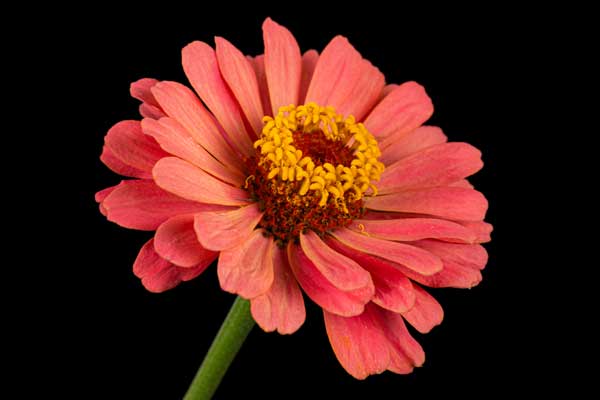
Hot Peppers
Hot peppers (Capsicum spp.) are spicy, fruit-bearing plants known for their heat and flavor. As a companion plant for cucumbers, hot peppers provide several benefits, including pest deterrence and improving garden biodiversity.
Benefits of Hot Peppers for Cucumbers
- Pest Deterrent: Hot peppers can deter pests such as aphids and cucumber beetles, protecting cucumber plants from damage.
- Improved Biodiversity: Growing various plants, including hot peppers, can enhance garden biodiversity and plant health.
- Companion Plant Benefits: Hot peppers and cucumbers can grow well together without competing for resources, as they occupy different root zones.
Planting Hot Peppers with Cucumbers
Planting Instructions:
- Sow hot pepper seeds indoors 8-10 weeks before the last frost or purchase seedlings.
- When the soil is warm, transplant seedlings to the garden after the last frost.
Spacing Requirements:
- Plant hot peppers about 12-18 inches apart from cucumber plants to allow for good air circulation and prevent overcrowding.
Common Mistakes to Avoid
- Overwatering: Ensure hot peppers are not planted in waterlogged soil to prevent root rot.
- Planting Too Close: Avoid planting hot peppers too close to cucumbers to reduce competition for nutrients and water.
- Ignoring Support: Support taller pepper varieties to ensure proper growth and prevent plants from toppling over.
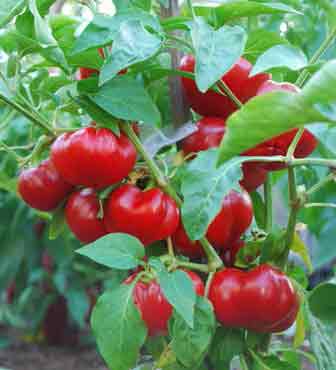
Garlic
Garlic (Allium sativum) is a pungent bulb known for its culinary uses and pest-repellent properties. As a companion plant for cucumbers, garlic provides several benefits, including deterring pests and improving soil health.
Benefits of Garlic for Cucumbers
- Pest Deterrent: Garlic emits a strong odor that deters pests such as aphids, spider mites, and cucumber beetles, protecting cucumber plants.
- Soil Health: Garlic has shallow roots that help improve soil structure and prevent erosion.
- Disease Prevention: Garlic can help reduce the incidence of certain fungal diseases by improving air circulation when adequately spaced.
Planting Garlic with Cucumbers
Planting Instructions:
- Plant garlic cloves in the garden in the fall, about 6-8 weeks before the first frost.
- Space cloves evenly and cover with soil.
Spacing Requirements:
- Plant garlic about 6-8 inches apart from cucumber plants to allow for good air circulation and prevent overcrowding.
Common Mistakes to Avoid
- Overwatering: Ensure garlic is not planted in waterlogged soil to prevent root rot.
- Planting Too Close: Avoid planting garlic too close to cucumbers to ensure both plants receive adequate light and nutrients.
- Ignoring Weeding: Regularly weed around garlic plants to prevent competition and maintain healthy growth.

Lentils
Lentils (Lens culinaris) are legumes known for their nutrient-rich seeds and nitrogen-fixing ability. As a companion plant for cucumbers, lentils provide several benefits, including soil enrichment and mutual growth enhancement.
Benefits of Lentils for Cucumbers
- Nitrogen Fixation: Lentils can fix nitrogen in the soil, enriching it and providing essential nutrients for cucumber plants.
- Mutual Support: Lentils can provide structural support for cucumber vines, especially using pole varieties.
- Pest Deterrent: Lentils can help repel pests such as aphids and cucumber beetles, protecting cucumber plants from damage.
Planting Lentils with Cucumbers
Planting Instructions:
- Sow lentil seeds directly in the garden after the last frost.
- Plant seeds 1 inch deep and 2-4 inches apart in rows.
Spacing Requirements:
- Plant lentils about 12 inches apart from cucumber plants to allow for good air circulation and prevent overcrowding.
Common Mistakes to Avoid
- Overwatering: Ensure lentils are not planted in waterlogged soil to prevent root rot.
- Planting Too Close: Avoid planting lentils too close to cucumbers to reduce competition for nutrients and water.
- Ignoring Support: Support pole varieties to ensure proper growth and prevent plants from toppling over.
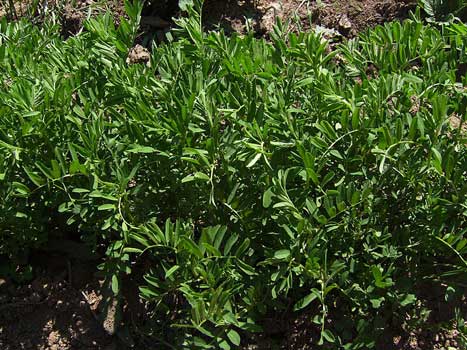
Chives
Chives (Allium schoenoprasum) are a perennial herb known for their mild onion flavor and edible flowers. Chives provide several benefits as a companion plant for cucumbers, including pest deterrence and improving soil health.
Benefits of Chives for Cucumbers
- Pest Deterrent: Chives emit a strong odor that deters pests such as aphids, carrot flies, and cucumber beetles, protecting cucumber plants.
- Disease Prevention: Chives can help reduce the incidence of certain fungal diseases by improving air circulation when adequately spaced.
- Soil Health: Chives have shallow roots that help improve soil structure and prevent erosion.
Planting Chives with Cucumbers
Planting Instructions:
- Sow chive seeds directly in the garden in the spring or fall, or start them indoors 6-8 weeks before planting.
- Transplant seedlings to the garden when they are sturdy enough to handle.
Spacing Requirements:
- Plant chives are about 8-12 inches apart from cucumber plants, allowing good air circulation and preventing overcrowding.
Common Mistakes to Avoid
- Overwatering: Ensure chives are not planted in waterlogged soil to prevent root rot.
- Planting Too Close: Avoid planting chives too close to cucumbers to reduce competition for nutrients and water.
- Ignoring Trimming: Regularly trim chive leaves to encourage new growth and maintain plant health.
Related Chives Companion Plants
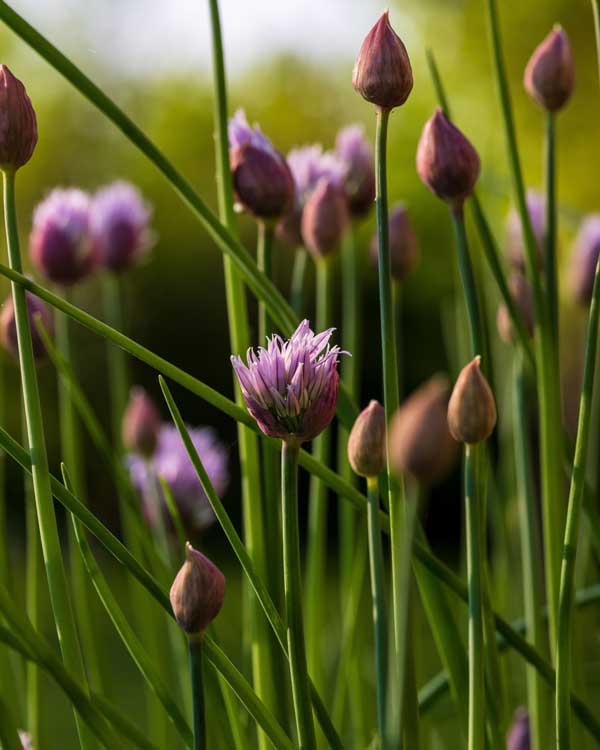
Borage
Borage (Borago officinalis) is a flowering herb known for its star-shaped blue flowers and edible leaves. As a companion plant for cucumbers, borage provides several benefits, including attracting beneficial insects and improving plant resilience.
Benefits of Borage for Cucumbers
- Attract Beneficial Insects: Borage attracts pollinators and beneficial insects such as bees and predatory wasps, enhancing pollination and pest control.
- Pest Deterrent: Borage can help deter pests such as tomato hornworms and cabbage worms, protecting cucumber plants.
- Soil Health: Borage’s deep roots help improve soil structure and nutrient availability for cucumber plants.
Planting Borage with Cucumbers
Planting Instructions:
- Sow borage seeds directly in the garden after the last frost or start them indoors 4-6 weeks earlier.
- Transplant seedlings to the garden when they are sturdy enough to handle.
Spacing Requirements:
- Plant borage is about 12-18 inches apart from cucumber plants, allowing good air circulation and preventing overcrowding.
Common Mistakes to Avoid
- Overwatering: Ensure borage is not planted in waterlogged soil to prevent root rot.
- Planting Too Close: Avoid planting borage too close to cucumbers to reduce competition for nutrients and water.
- Ignoring Deadheading: Remove spent blooms to promote new flower growth and maintain plant health.
Related Borage Companion Plants
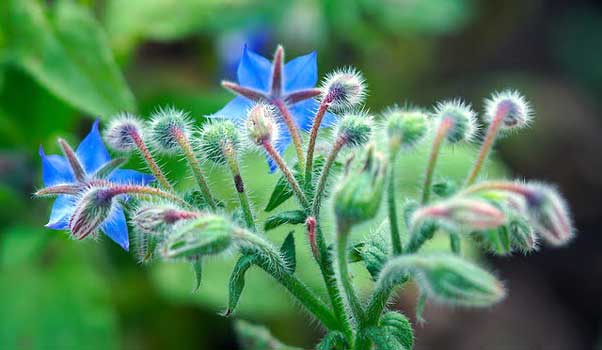
Corn
Corn (Zea mays) is a tall, grain-producing plant known for its edible kernels. As a cucumber companion plant, corn provides several benefits, including supporting cucumber vines and improving garden biodiversity.
Benefits of Corn for Cucumbers
- Natural Trellis: Corn provides a natural trellis for cucumber vines to climb, reducing the need for additional support structures.
- Improved Biodiversity: Growing various plants, including corn, can enhance garden biodiversity and plant health.
- Microclimate Creation: Corn’s tall stalks can create a favorable microclimate by providing shade and wind protection for cucumber plants.
Planting Corn with Cucumbers
Planting Instructions:
- Sow corn seeds directly in the garden after the last frost.
- Plant seeds 1 inch deep and 6-8 inches apart in rows.
Spacing Requirements:
- Plant corn about 18-24 inches apart from cucumber plants to allow for good air circulation and prevent overcrowding.
Common Mistakes to Avoid
- Overwatering: Ensure corn is not planted in waterlogged soil to prevent root rot.
- Planting Too Close: Avoid planting corn too close to cucumbers to reduce competition for nutrients and water.
- Ignoring Support: Provide support for tall corn stalks to prevent them from toppling over, especially in windy conditions.
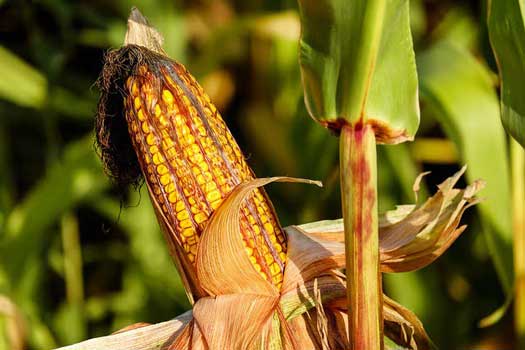
Peas
Peas (Pisum sativum) are legumes known for their sweet, edible pods and nitrogen-fixing ability. As a companion plant for cucumbers, peas provide several benefits, including soil enrichment and mutual growth enhancement.
Benefits of Peas for Cucumbers
- Nitrogen Fixation: Peas can fix nitrogen in the soil, enriching it and providing essential nutrients for cucumber plants.
- Mutual Support: Peas can provide structural support for cucumber vines, especially using pole varieties.
- Pest Deterrent: Peas can help repel pests such as aphids and cucumber beetles, protecting cucumber plants from damage.
Planting Peas with Cucumbers
Planting Instructions:
- Sow pea seeds directly in the garden as soon as the soil can be worked in the spring.
- Plant seeds 1 inch deep and 2 inches apart in rows.
Spacing Requirements:
- Plant peas about 6-8 inches apart from cucumber plants to allow for good air circulation and prevent overcrowding.
Common Mistakes to Avoid
- Overwatering: Ensure peas are not planted in waterlogged soil to prevent root rot.
- Planting Too Close: Avoid planting peas too close to cucumbers to reduce competition for nutrients and water.
- Ignoring Support: Provide support for climbing pea varieties to ensure proper growth and prevent plants from toppling over.
Related: Companion Plants For Peas

Mint
Mint (Mentha spp.) is a fragrant herb known for its refreshing flavor and vigorous growth. As a cucumber companion plant, mint provides several benefits, including pest deterrence and improving garden biodiversity.
Benefits of Mint for Cucumbers
- Pest Deterrent: Mint emits a strong aroma that deters pests such as aphids, ants, and cucumber beetles, protecting cucumber plants.
- Improved Biodiversity: Growing various plants, including mint, can enhance garden biodiversity and plant health.
- Soil Health: Mint’s spreading roots help improve soil structure and prevent erosion.
Planting Mint with Cucumbers
Planting Instructions:
- Plant mint cuttings or seedlings directly in the garden after the last frost.
- Transplant seedlings to the garden when they are sturdy enough to handle.
Spacing Requirements:
- Plant mint about 12-18 inches apart from cucumber plants to allow for good air circulation and prevent overcrowding.
Common Mistakes to Avoid
- Overwatering: Ensure mint is not planted in waterlogged soil to prevent root rot.
- Planting Too Close: Avoid planting mint too close to cucumbers to reduce competition for nutrients and water.
- Ignoring Trimming: Regularly trim mint to prevent it from spreading aggressively and overtaking other plants.
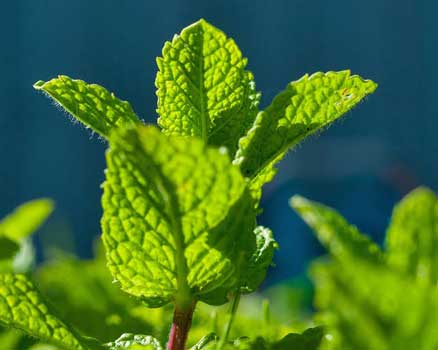
Cilantro
Cilantro (Coriandrum sativum) is an aromatic herb known for its distinct flavor and pest-repellent properties. As a companion plant for cucumbers, cilantro provides several benefits, including attracting beneficial insects and improving soil health.
Benefits of Cilantro for Cucumbers
- Attract Beneficial Insects: Cilantro attracts pollinators and beneficial insects such as bees and predatory wasps, enhancing pollination and pest control.
- Pest Deterrent: Cilantro can help deter pests such as aphids, spider mites, and cucumber beetles, protecting cucumber plants.
- Soil Health: Cilantro’s roots help improve soil structure and nutrient availability for cucumber plants.
Planting Cilantro with Cucumbers
Planting Instructions:
- Sow cilantro seeds directly in the garden after the last frost or start them indoors 4-6 weeks earlier.
- Transplant seedlings to the garden when they are sturdy enough to handle.
Spacing Requirements:
- Plant cilantro about 12-18 inches apart from cucumber plants to allow for good air circulation and prevent overcrowding.
Common Mistakes to Avoid
- Overwatering: Ensure cilantro is not planted in waterlogged soil to prevent root rot.
- Planting Too Close: Avoid planting cilantro too close to cucumbers to reduce competition for nutrients and water.
- Ignoring Trimming: Regularly trim cilantro leaves to encourage new growth and maintain plant health.
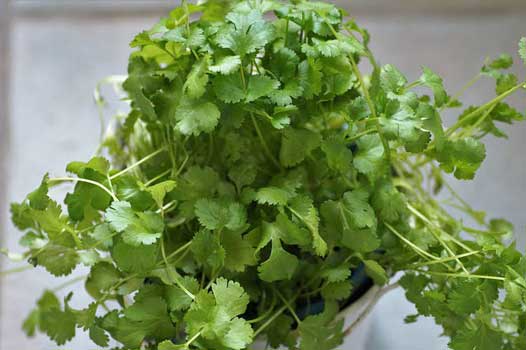
Plants to Avoid with Cucumbers
Brassicas
Brassicas, such as cabbage, broccoli, and cauliflower, are not ideal companions for cucumbers due to their nutrient needs and growth habits.
- Nutrient Competition: Brassicas are heavy feeders and can compete with cucumbers for essential nutrients like nitrogen.
- Space Issues: These plants can grow large and may crowd out cucumber vines, limiting their space to spread.
- Pest Attraction: Brassicas attract pests like cabbage worms and aphids, which can spill over to cucumber plants.
Melons, Zucchini, and Squash
Melons, zucchini, and squash are not recommended to plant near cucumbers because they share similar pests and diseases.
- Pest and Disease Spread: These plants are susceptible to the same pests and diseases, such as cucumber beetles and powdery mildew, which can spread quickly between them.
- Space Competition: All these plants have sprawling growth habits and can compete for ground space, sunlight, and nutrients.
- Water Needs: They all require substantial water, which can lead to soil moisture competition.
Potatoes
Potatoes should be planted away from cucumbers due to their potential to attract pests and their aggressive root systems.
- Pest Attraction: Potatoes attract pests like the Colorado potato beetle, which can also damage cucumber plants.
- Soil Competition: Potatoes have extensive root systems that can compete with cucumbers for nutrients and water.
- Disease Spread: Potatoes are prone to blight, which can spread to cucumbers and other plants in the garden.
Fennel
Fennel is one of the few plants that should not be planted near cucumbers due to its allelopathic properties.
- Allelopathic Chemicals: Fennel releases chemicals into the soil that can inhibit the growth of nearby plants, including cucumbers.
- Nutrient Competition: Fennel can compete with cucumbers for nutrients, reducing cucumber plants’ overall health and yield.
- Growth Habit: Fennel’s tall growth can shade cucumber plants, limiting their access to sunlight.
By avoiding these plants as companions for cucumbers, you can ensure a healthier and more productive garden. Instead, choose companion plants that support cucumbers’ growth and help manage pests and diseases effectively.

FAQ: Cucumber Companion Plants
- What are the best cucumber companion plants?
- Some of the best companion plants for cucumbers include:
- Marigolds: Repel pests and attract beneficial insects.
- Nasturtiums: Deter pests and attract pollinators.
- Oregano: Repel pests and attract beneficial insects.
- Sunflowers: Attract pollinators and provide support for climbing cucumbers.
- Beans: Fix nitrogen in the soil, enhancing cucumber growth.1
What are squash and cucumber companion plants?
Good companion plants for squash and cucumbers include:
- Marigolds: Repel pests common to both plants.
- Sunflowers: Attract pollinators and provide support for both squash and cucumber vines.
- Nasturtiums: Deter pests and attract beneficial insects for both plants.
Are okra and cucumber good companion plants?
Okra and cucumber companion plants can be grown together. Still, it’s important to consider their differing growth habits and care needs. Okra’s tall stature can shade cucumber plants, so proper spacing and management are essential. Marigolds and beans are suitable companions that benefit both okra and cucumbers.
What are suitable companion plants for asparagus and cucumbers?
Asparagus and cucumbers have different growth habits and care requirements, making them less compatible companions. However, if grown together, consider planting marigolds or beans to deter pests and improve soil fertility.
What are some cucumber companion plants in the UK?
In the UK, cucumbers thrive alongside companions such as:
- Chives: Repel pests and attract pollinators.
- Radishes: Deter pests and help loosen soil.
- Lettuce: Provides ground cover and shares similar growing conditions with cucumbers.
Can cucumbers and kale be grown together as companion plants?
While cucumbers and kale can be grown together, kale’s nutrient demands and growth habits may not make it the best companion. However, consider incorporating marigolds or beans to benefit both plants if planted together.
What are suitable Armenian cucumber companion plants?
Like regular cucumbers, Armenian cucumbers benefit from companions such as marigolds, sunflowers, and beans. These plants help repel pests, attract insects, and improve soil fertility.
What are the recommended companion plants for cucumbers in New Zealand?
In New Zealand, cucumber companion plants include:
Nasturtiums: Repel pests and attract pollinators.
Dill: Attract beneficial insects and enhance flavor.
Sunflowers: Provide support and attract pollinators.
Can melons and cucumbers be grown together as companion plants?
Melon and cucumber companion plants can be grown together as companion plants. Still, it’s important to consider their similar growth habits and space requirements. Planting marigolds or sunflowers between them can help deter pests and improve pollination.
What are good companion plants for onions and cucumbers?
Onion and cucumber companion plants are good, as onions repel pests harmful to cucumbers. Consider planting marigolds, beans, or dill alongside them to further enhance pest control and soil fertility.
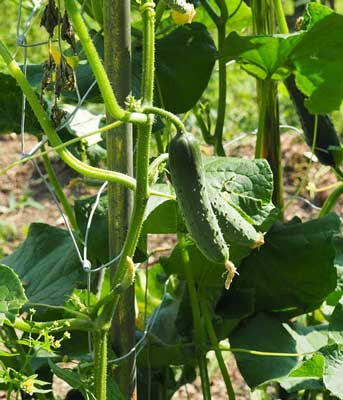
Conclusion
In conclusion, selecting the right companion plants for cucumbers is essential for maximizing garden productivity and promoting plant health. Gardeners can harness the benefits of pest control, pollination enhancement, and space optimization by strategically choosing cucumber companion plants such as marigolds, nasturtiums, and onions. These companions help create a harmonious ecosystem where cucumbers thrive alongside other beneficial plants.
However, it’s equally important to avoid planting incompatible companions like squash, okra, and kale near cucumbers. These plants may compete for resources, attract shared pests and diseases, or hinder cucumber growth due to incompatible growth habits.
Overall, by understanding the roles of different plants in the garden and carefully selecting cucumber companion plants, gardeners can foster a balanced and resilient environment that promotes the health and abundance of their cucumber crop.

